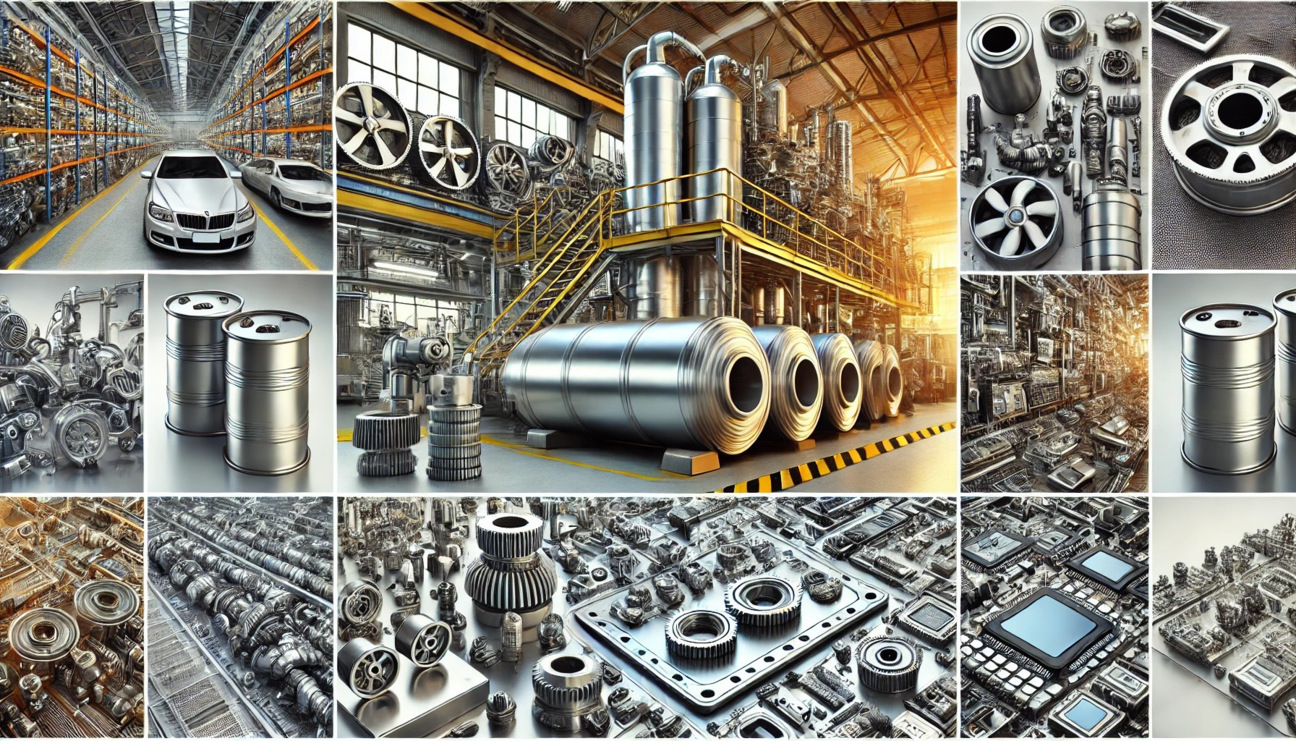DEMARTIN electroless nickel
Chemical nickel, also known as nickel-phosphorus (NiP) or electroless nickel (EN), is an electroless deposited coating that is characterised by outstanding properties and a wide range of possible applications. The properties of electroless nickel are significantly influenced by the phosphorus content. With a high phosphorus content of 10-12%, the coating offers excellent corrosion protection and has an amorphous structure. A low phosphorus content of 3-7%, on the other hand, results in high hardness and wear resistance, which can reach up to 1000 HV after heat treatment.
Further advantages of electroless nickel are the uniform, non-porous layer, good sliding properties, chemical resistance and noise reduction. The coating thickness is typically between 5-50 µm.
Chemical nickel is used in numerous industries, including the automotive and aerospace industries for injection systems, chassis components and turbine blades. In the chemical industry, it is used for heat exchangers, pressure vessels and reactors. Electroless nickel is also used in electronics for connectors and electromagnetic shielding. In medical technology, it is used as a base layer for joint prostheses and in optics for mirror optics.
Typical components that are coated with electroless nickel are pump housings, gear parts, valves, tool components and decorative parts. Compared to galvanic nickel plating, electroless nickel offers some significant advantages. It enables a uniform layer thickness even with complex geometries and does not require an external power source. Electroless nickel is also characterised by greater dimensional accuracy and corrosion resistance. Another advantage is the ability to coat almost all metals and alloys with electroless nickel.
To summarise, electroless nickel is a high-quality coating solution for demanding applications due to its adjustable properties, excellent protective effect and versatile application options. Electroless plating also enables precise and economical surface finishing, which is valued in many branches of industry. Whether in the automotive industry, mechanical engineering, vacuum technology, electrical engineering, chemistry, electronics, medical technology or optics - electroless nickel coatings offer a reliable and durable solution for the protection and functionality of components. Thanks to electroless deposition, even complex geometries can be evenly coated without the need for an external power source. With its high hardness, wear resistance and excellent corrosion protection, electroless nickel is convincing in numerous areas of application and contributes to the optimisation of products and processes.
Possible process variants:
Chemical Nickel High-Phos
Standard coating with a phosphorus content of 9-12% by weight, which is characterised by high corrosion protection and ductility, coating of all common base materials possible, glossy.
Chemical Nickel Mid-Phos
Special process with a phosphorus content of 5-9% by weight, characterised by high hardness and high gloss level, coating of all base materials possible.
Chemical nickel - thermal post-treatment
The surface hardness and wear behaviour of electroless nickel coatings can be increased by means of thermal post-treatment.
Furthermore, it has been proven that this downstream process results in better coating adhesion. We are able to cure under atmospheric conditions as well as under inert gas.
Advantages
- Excellent corrosion resistance thanks to the amorphous nickel-phosphorus alloy, especially with high phosphorus contents (10-12%)
- Excellent wear and abrasion resistance, which can be further increased by heat treatment, up to 1000 HV.
- Uniform, pore-free layer thickness even with complex component geometries and hard-to-reach areas thanks to electroless plating
- Good sliding properties and reduction of friction against other materials
- Adjustable hardness and ductility depending on phosphorus content and heat treatment
- Improved chemical resistance to various media
- Good solderability and contactability for electronic applications
- High dimensional accuracy and tight tolerances due to uniform layer structure
- Good adhesion to almost all metallic base materials.
Specifications
Industries
- Medical technology
- Machinery industry
- Semiconductor industry / semiconductors
- Textile machinery industry
- Energy and electrical engineering
- Mould and tool making
- Plant and apparatus engineering
- Armaments industry
- Automotive industry
- 3D printed metal parts
Remarks
Layer thickness recommendation:
- Mild wear stress, mild corrosion stress 5 - 10 µm
- Medium wear stress, medium corrosion stress 10 - 25 µm
- heavy wear stress, heavy corrosion stress 25 - 50 µm
- very heavy wear stress, very heavy corrosion stress 50 µm

